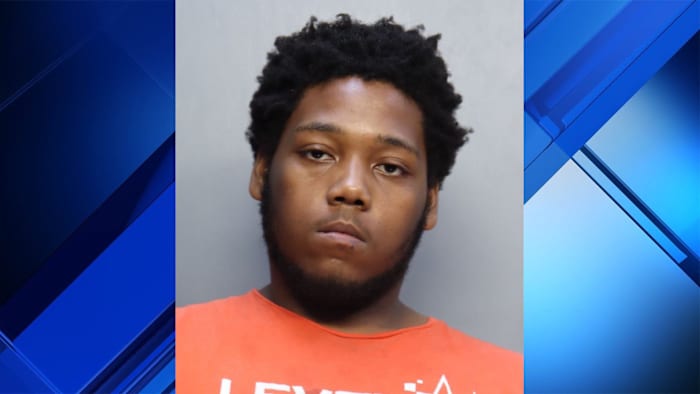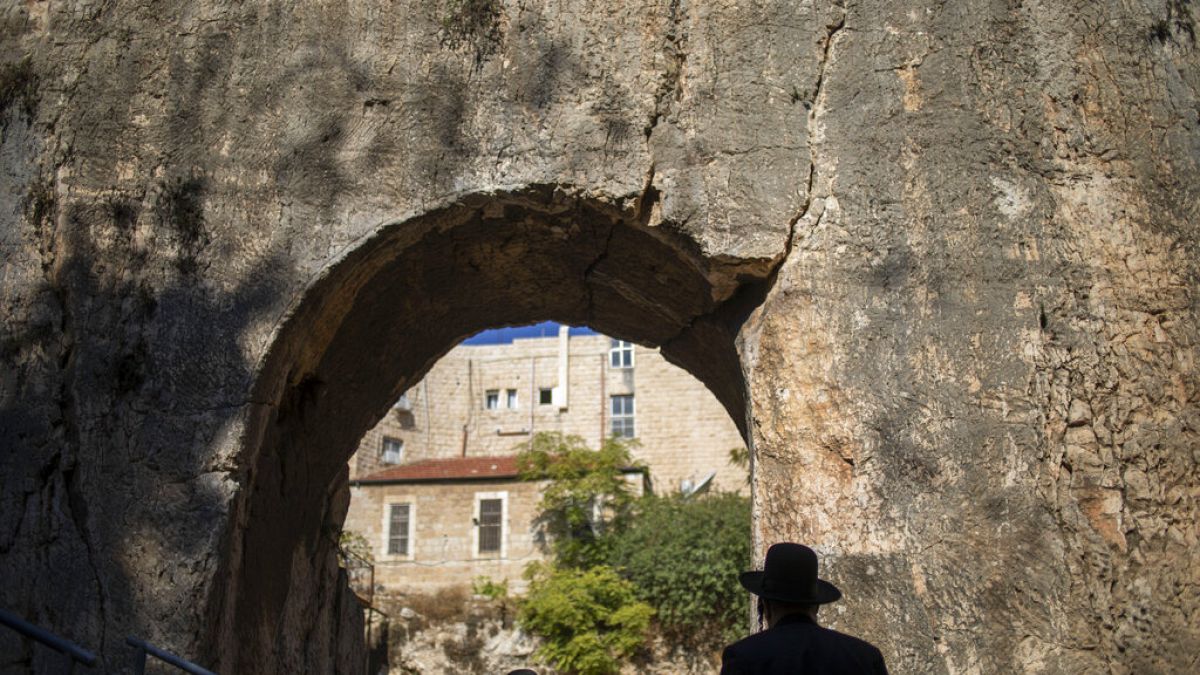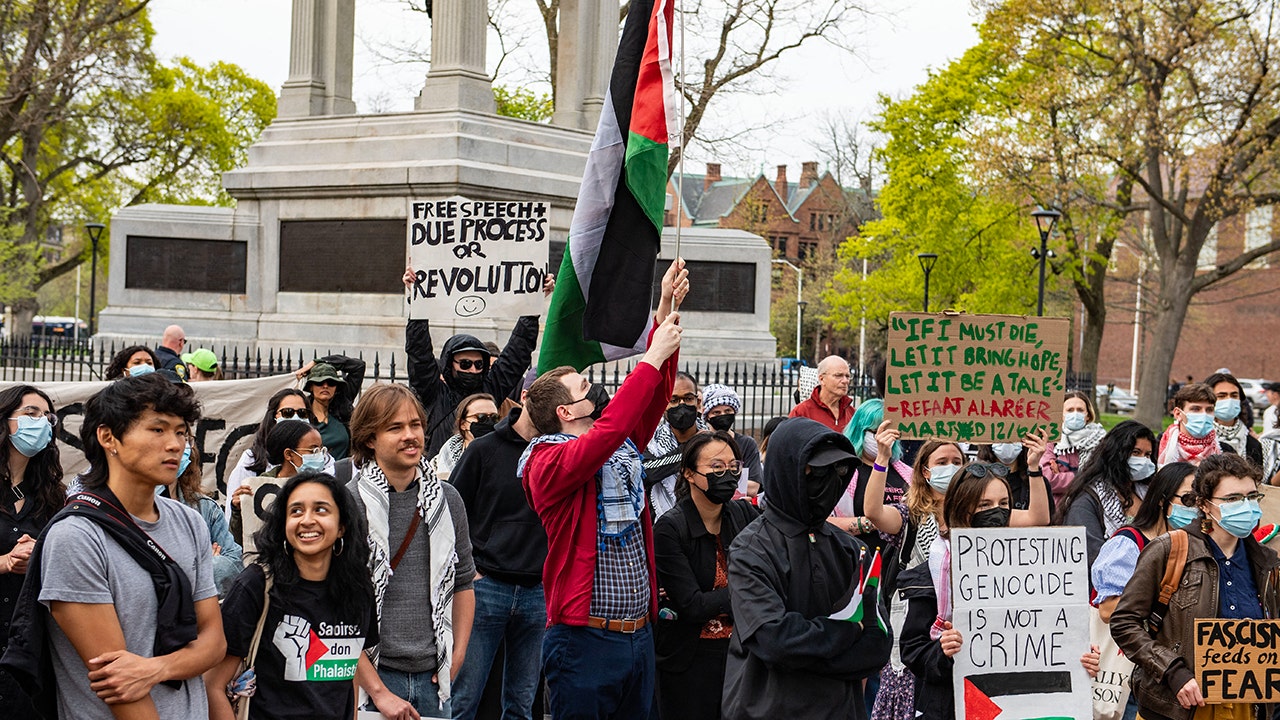New York
Anguish in an Immigrant Community After a Sheriff’s Deputy Kills 2 Teens

SYRACUSE, N.Y. — They buried them both on Saturday: a pair of identical gray coffins, wheeled out of a hillside church and into the adopted hometown of many of the mourners.
The two dead — Dhal Apet, 17, and Lueth Mo, 15 — were part of the South Sudanese community here in Syracuse, second-generation émigrés whose parents and friends had fled violence in their home country to come to the seeming safety of upstate New York.
For many, however, that sense of security was shaken early on the morning of Sept. 6, when the two teenagers were shot and killed by a Onondaga County’s sheriff’s deputy responding to a call of suspicious activity at a parking lot in neighboring DeWitt, N.Y. The authorities had been investigating reports of two stolen cars and a burglary at a local smoke shop in the hours before the shooting.
The Onondaga County sheriff, Tobias Shelley, said in a news conference that the deputy — identified as John Rosello, 34 — had been investigating the burglary and believed the car to be the one involved in that crime. After receiving the call of suspicious activity, the deputy arrived at the parking lot and shot into the car three times as it sped away, with the teenagers inside, after it drove toward him.
The two teenagers were later found nearby, one already dead, the other dying. The car’s driver had disappeared, but Sheriff Shelley referred to both of the deceased teenagers as suspects in the burglary, saying that things had happened “very quickly and hectically.”
He has justified the shooting, saying that Deputy Rosello had acted in self-defense. He was trapped between the vehicle and a heavy metal-and-wood workbench sitting in the parking lot, Sheriff Shelley said. “He had nowhere to flee to,” the sheriff said, adding, “The deputies have a right to defend themselves by whatever means necessary.”
But that narrative was punctured, in part, when the state attorney general, Letitia James, released security footage on Tuesday showing the deputy ramming the car and easily evading it before shooting. The deputy was uninjured.
Sheriff Shelley did not respond to a request for comment after the attorney general’s report, but Ms. James’s Office of Special Investigation is conducting an investigation into the incident. The Onondaga County district attorney, William Fitzpatrick, has said he is deferring to Ms. James. “The truth and facts will eventually be known,” Mr. Fitzpatrick said.
Chol Majok, a member of the Syracuse Common Council who is a former refugee from South Sudan, said his focus at the moment was not to cast blame but to hold his community together.
“When we came to this country, we were looking for second chances in life,” he said, adding, “There is tremendous faith, in our community, in this country. And everything it has to offer.”
He added: “We have been just trying to tell to the community, especially as people that are in a position of leadership that are South Sudanese, is that we keep the faith, the faith that helped us cross the oceans and brought us to this land, that that faith still shines and still burns. And that’s what we lean on.”
Still, the pain of the deaths is palpable. Reached by phone, Pothwei Bangoshoth, the father of Dhal, the 17-year-old who died, said he was too grief-stricken to speak about his son. But his anger seemed clear on Facebook, where he posted a pointed message along with the video released by Ms. James’s office.
“It’s one of the ways that police use to murder teenagers in America,” he wrote. “So, watch out for your child. My child has already passed. Let’s stop this police brutality in our society.”
Walt Dixie, a prominent local activist, said he was appalled and bewildered by the deputy’s actions before backup arrived. “Why are you trying to take this on all by yourself?” Mr. Dixie said, adding, “To ram a car in like that? I know that’s not how you do it.”
The sense of outrage extends beyond the African population, said H. Bernard Alex, the president of the Syracuse Chapter of the National Action Network, noting what he called a sometimes adversarial relationship between the sheriff’s department and the city’s broader Black community.
“They are angry because — as one young man said to me — he said, ‘I knew that this was coming, but I didn’t think it would be kids,’” Mr. Alex said.
Mr. Alex and others in his organization were particularly troubled by the fact that the deputy had not turned on his body-cam, saying in a statement last week that the actions of the sheriff’s office have “diminished the public trust” between “the African and African American communities who call Syracuse and Onondaga County home.”
Mr. Alex — who is also pastor of Victory Temple Fellowship Church, a Baptist church in Syracuse — acknowledged that there are sometimes divisions between traditional Black communities and newly arrived African residents in Syracuse.
“They have to try to fit in somehow with African Americans, in school and neighborhoods ,” said Mr. Alex, whose wife is Liberian. He said that “African Americans are not always kind to Africans.”
Others in the African community say that the challenges of living in a new environment — with daily stresses like money — can be steep.
“What happens is that most of these kids, they don’t have the support that they need,” said Hanson Goeso, a Liberian who is the founder of a local semiprofessional soccer team. “Family working, dad is working, and so now you have kids raising themselves with the influence of the outside world. And you get situations like this.”
At the site of the shooting, in a downtrodden mobile home park, some said that they felt sympathy for both the teenagers and the deputy. William Marvin, who lives about 300 feet from the shooting site, says he heard the gunshots that morning, which alarmed his dog, Bear.
“I don’t like how its being spinned that the cop is a kid killer,” said Mr. Marvin, 50, a driver who is a volunteer firefighter, adding, “When someone is behind the wheel of a vehicle, you got a split second to think, you don’t realize how old they are, it doesn’t cross your mind.”
He added: “For everybody to paint this sheriff out to be some bad guy, he’s not. He was doing his job to be protecting the community he’s serving.”
The funeral services on Saturday, held at a Catholic church on Syracuse’s north side, drew several hundred mourners, who listened as the pastor, Severine Yagaza, a Tanzanian, spoke of the pain of the family and the deaths of two “sons of Sudan,” whose oversized portraits sat on easels nearby.
As the coffins were wheeled away, several of the mourners broke down, weeping into each other’s arms as the procession to the burial began. Two of those standing outside the church were Riny Ayol, 39, and Lueth Yak, 46, both of whom were from South Sudan and know the families.
Mr. Yak said that the South Sudanese community “never thought they would go through this” in Syracuse, considered one of the “best places to live.”
“We never thought that it would hit the South Sudanese in Syracuse,” Mr. Yak said. “The Syracuse community has been a welcoming community, we feel at home here,” adding that some Sudanese who move elsewhere end up moving back.
Mr. Ayol echoed that, expressing both sorrow at the boys’ deaths and the circumstances, still murky, of that morning.
“The crime that happened, it’s not worth taking someone’s life,” he said.
Susan Beachy contributed research.

New York
Are You Smarter Than a Billionaire?

Over the course of one week, some of the richest people in the world descended on New York’s auction houses to purchase over $1 billion of art. It might have played out a little differently than you would have expected.
Can you guess which of these works sold for more?
Note: Listed sale prices include auction fees.
Image credits: “Untitled,” via Phillips; “Baby Boom,” via Christie’s Images LTD; “Hazy Sun,” With permission of the Renate, Hans & Maria Hofmann Trust/Artists Rights Society (ARS), New York; via Christie’s Images LTD; “Petit Matin,” via Christie’s Images LTD; “Concetto spaziale, La fine di Dio,” Artists Rights Society (ARS), New York/SIAE, Rome; via Sotheby’s; “Baroque Egg with Bow (Orange/Magenta),” via Sotheby’s; “The Last Supper,” The Andy Warhol Foundation for the Visual Arts, Inc./Licensed by Artists Rights Society (ARS), New York; via Christie’s Images LTD; “Campbell’s Soup I,” The Andy Warhol Foundation for the Visual Arts, Inc./Licensed by Artists Rights Society (ARS), New York; via Christie’s Images LTD; “Miss January,” via Christie’s Images LTD; “Fingermalerei – Akt,” via Sotheby’s; “Grande tête mince (Grande tête de Diego),” Succession Alberto Giacometti/Artists Rights Society (ARS), NY; via Sotheby’s; “Tête au long cou,” Succession Alberto Giacometti/ARS, NY/Photos: ADAGP Images/Paris 2025; via Christie’s Images LTD; “Revelacion,” Remedios Varo, Artists Rights Society (ARS), New York / VEGAP, Madrid; via Christie’s Images LTD; “Le jardin nocturne,” Foundation Paul Delvaux, Sint-Idesbald – ARS/SABAM Belgium; via Christie’s Images LTD.
Produced by Daniel Simmons-Ritchie.
New York
Video: How a Mexican Navy Ship Crashed Into the Brooklyn Bridge

On Saturday, a Mexican Navy ship on a good will tour left a New York City pier bound for Iceland. Four minutes later, it crashed into the Brooklyn Bridge. [Spanish] “It’s falling!” [English] “No way!” Here’s what happened. The Cuauhtémoc had been docked on the Lower East Side of Manhattan for four days, open to visitors looking for a cultural experience. As the ship prepared to leave on Saturday night, a tugboat arrived to escort it out of its pier at 8:20 p.m. The ship’s bow, the front of the vessel, faced Manhattan, meaning it would need to back out of its berth into the East River. As the Cuauhtémoc pulled away from shore, the tugboat appeared to push the side of the ship, helping to pivot the bow south toward its intended route. The river was flowing northeast toward the Brooklyn Bridge and the wind was blowing in roughly the same direction, potentially pushing the ship toward a collision. Photos and videos suggest the tugboat was not tied to the ship, limiting its ability to pull the ship away from the bridge. The Cuauhtémoc began to drift north, back first, up the river. Dr. Salvatore Mercogliano, who’s an adjunct professor at the U.S. Merchant Marine Academy, told The Times that the ship appeared to be giving off a wake. This suggests its propellers may have been running in reverse, pushing it faster toward the bridge. The tugboat sped alongside the ship as it headed north, possibly trying to get in front of it and help the ship maneuver the other way. But it was unable to cut the ship off or reverse its course. All three masts crashed into the underside of the Brooklyn Bridge at approximately 8:24 p.m., four minutes after the ship had left the pier, causing the top sails to collapse. Crew members standing on the masts during the collision were thrown off entirely. Others remained hanging from their harnesses. A New York City patrol boat arrived about eight minutes after the collision, followed quickly by a fire department boat. Additional law enforcement and emergency medical services removed the wounded for treatment. According to the Mexican Navy, two of the 227 people aboard the ship were killed and 22 others were injured.
New York
Audio Data Shows Newark Outage Problems Persisted Longer Than Officials Said

On April 28, controllers at a Philadelphia facility managing air traffic for Newark Liberty International Airport and smaller regional airports in New Jersey suddenly lost radar and radio contact with planes in one of the busiest airspaces in the country.
On Monday, two weeks after the episode, Sean Duffy, the secretary of transportation, said that the radio returned “almost immediately,” while the radar took up to 90 seconds before it was operational.
A Times analysis of flight traffic data and air traffic control feed, however, reveals that controllers were struggling with communication issues for several minutes after transmissions first blacked out.
The episode resulted in multiple air traffic controllers requesting trauma leave, triggering severe flight delays at Newark that have continued for more than two weeks.
Several exchanges between pilots and controllers show how the outage played out.
Outage Begins
Air traffic recordings show that controllers at the Philadelphia facility first lost radio and radar communications for about a minute starting just before 1:27 p.m., after a controller called out to United Flight 1951, inbound from Phoenix.
The pilot of United 1951 replied to the controller’s call, but there was no answer for over a minute.
1:26:41 PM
Controller
OK, United 1951.
1:26:45 PM
Pilot
Go ahead.
1:27:18 PM
Pilot
Do you hear us?
1:27:51 PM
Controller
How do you hear me?
1:27:53 PM
Pilot
I got you loud and clear now.
Two other planes reached out during the same period as United 1951 — a Boeing 777 inbound from Austria and headed to Newark, and a plane whose pilot called out to a controller, “Approach, are you there?” Their calls went unanswered as well.
Radio Resumes, With Unreliable Radar
From 1:27 to 1:28 p.m., radio communications between pilots and controllers resumed. But soon after, a controller was heard telling multiple aircraft about an ongoing radar outage that was preventing controllers from seeing aircraft on their radarscopes.
One of the planes affected by the radar issues was United Flight 674, a commercial passenger jet headed from Charleston to Newark.
1:27:32 PM
Pilot
United 674, approach.
1:27:36 PM
Controller
Radar contact lost, we lost our radar.
1:30:34 PM
Controller
Turn left 30 degrees.
1:31:03 PM
Pilot
All right, we’re on a heading of 356. …
1:31:44 PM
Controller
I see the turn. I think our radar might be a couple seconds behind.
Once the radio started operating again, some controllers switched from directing flights along their planned paths to instead providing contingency flight instructions.
At 1:28 p.m., the pilot of Flight N16NF, a high-end private jet, was called by a controller who said, “radar contact lost.” The pilot was then told to contact a different controller on another radio frequency.
About two and a half minutes later, the new controller, whose radar did appear to be functioning, instructed the pilot to steer towards a location that would be clear of other aircraft in case the radio communications dropped again.
Flight N426CB, a small private jet flying from Florida to New Jersey, was told to call a different radio frequency at Essex County Airport, known as Caldwell Airport, in northern New Jersey for navigational aid. That was in case the controllers in Philadelphia lost radio communications again.
1:27:57 PM
Controller
If for whatever reason, you don’t hear anything from me further, you can expect to enter right downwind and call Caldwell Tower.
1:29:19 PM
Controller
You just continue on towards the field. They’re going to help navigate you in.
This is in case we are losing our frequencies.
1:29:32 PM
Pilot
OK, I’m going over to Caldwell. Talk to you. Have a good afternoon.
Minutes Later, Radar Issues Persist
According to the Federal Aviation Administration, aircraft reappeared on radarscopes within 90 seconds of the outage’s start, but analysis of air traffic control recordings suggest that the radar remained unreliable for at least some radio frequencies for several minutes after the outage began around 1:27 p.m.
At 1:32 p.m., six minutes after the radio went quiet, Flight N824TP, a small private plane, contacted the controller to request clearance to enter “Class B” airspace — the type around the busiest airports in the country. The request was denied, and the pilot was asked to contact a different radio frequency.
1:32:43 PM
Pilot
Do I have Bravo clearance?
1:32:48 PM
Controller
You do not have a Bravo clearance. We lost our radar, and it’s not working correctly. …
If you want a Bravo clearance, you can just call the tower when you get closer.
1:32:59 PM
Pilot
I’ll wait for that frequency from you, OK?
1:33:03 PM
Controller
Look up the tower frequencies, and we don’t have a radar, so I don’t know where you are.
The last flight to land at Newark was at 1:44 p.m., but about half an hour after the outage began, a controller was still reporting communication problems.
“You’ll have to do that on your own navigation. Our radar and radios are unreliable at the moment,” a Philadelphia controller said to a small aircraft flying from Long Island around 1:54 p.m.
Since April 28, there has been an additional radar outage on May 9, which the F.A.A. also characterized as lasting about 90 seconds. Secretary Duffy has proposed a plan to modernize equipment in the coming months, but the shortage of trained staff members is likely to persist into next year.
-

 News1 week ago
News1 week agoMaps: 3.8-Magnitude Earthquake Strikes Southern California
-

 World1 week ago
World1 week agoPortuguese PM’s party set to win general election, fall short of majority
-
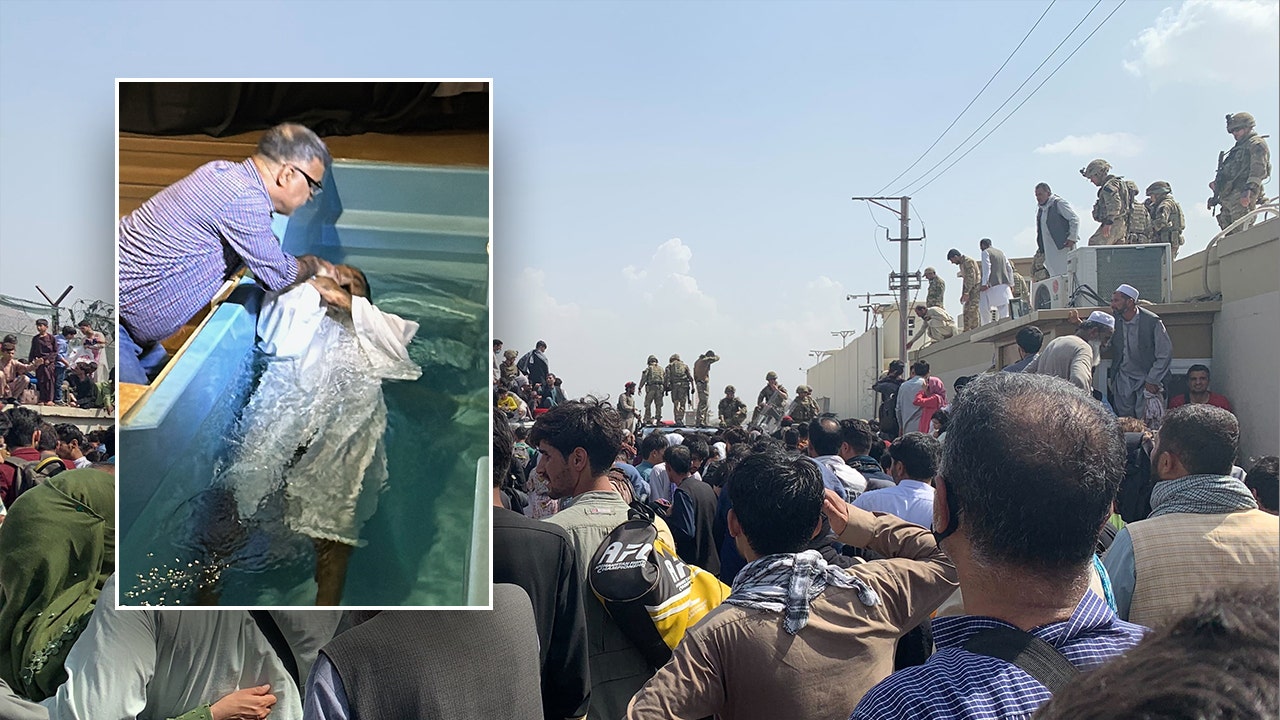
 Politics1 week ago
Politics1 week agoAfghan Christian pastor pleads with Trump, warns of Taliban revenge after admin revokes refugee protections
-

 Politics1 week ago
Politics1 week agoTrump, alongside first lady, to sign bill criminalizing revenge porn and AI deepfakes
-

 Movie Reviews1 week ago
Movie Reviews1 week agoReview | Magellan, conqueror of Philippines, as we’ve never seen him before
-

 Education1 week ago
Education1 week agoHow Usher Writes a Commencement Speech
-

 Politics1 week ago
Politics1 week agoExpert reveals how companies are rebranding 'toxic' DEI policies to skirt Trump-era bans: 'New wrapper'
-
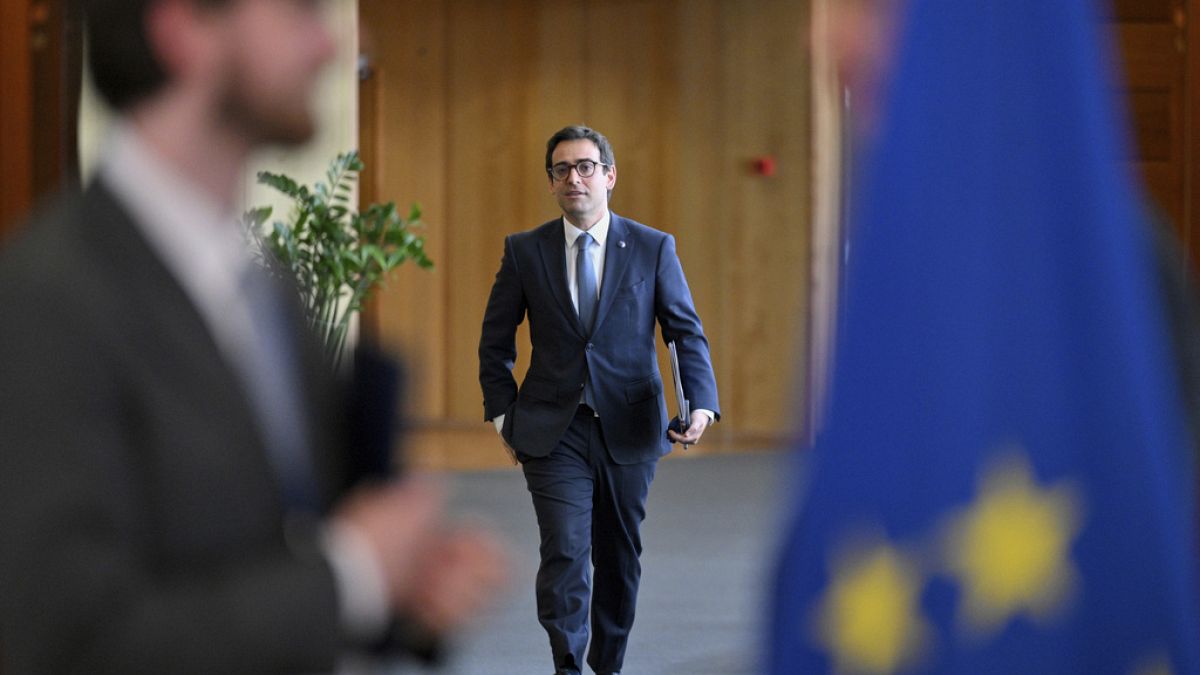
 World1 week ago
World1 week agoDigitisation fronts new Commission strategy to boost EU single market





